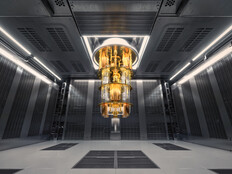The 6 Tenets of Flash Storage Success
As business IT continues to evolve, the world’s largest enterprise and hyperscale computing deployments increasingly rely on flash memory.
These companies continue to raise the performance bar of simple computing architectures by using flash in datacentric businesses in order to deliver user data faster. Many of the best practices adopted by the largest users of flash can also serve as foundations for success at small to medium-sized enterprises considering flash acceleration for their data.
The transformational nature of the change from disk-based storage to flash-based storage allows companies to maximize top-line output while minimizing bottom-line costs. Adopting some or all of the following best practices for success will help customers harness the economic advantages as well as the full computing advantages of flash.
1. Use Product Architectures Across NAND Sources and Generations
Each generation of rapidly evolving NAND chip technology brings its own performance, reliability and cost characteristics. Protect your investment and minimize IT impact by using vendors who deliver consistent price performance and management across flash media from different suppliers and generations. This flash performance must be backed by a successful track record of large data-center deployments that work as well on day 1 as they do on day 1,000.
2. Focus on Products that Match Mainstream Multi-Level Cell (MLC) NAND
The NAND market, which values low cost and high capacity over performance and long-term reliability, continues to be driven by consumer devices. Enterprises and hyperscale companies should focus on products that make use of dominant NAND supply to meet their nonvolatile memory requirements. This includes adopting common MLC NAND and adapting it to stringent performance and reliability metrics.
3. Standardize on Deployments That Can Adapt
New workloads constantly emerge in IT, making it important to purchase products with excellent performance across reads, writes and low latency, because the factor you most care about may change over time. Some products optimize for a fixed workload, even down to a specific block size, but dynamic, evolving workloads leave these architectures with little flexibility to improve.
4. Adopt a Consistent, Multi-Resident Flash Approach
If workloads change more dramatically, system-level adaptation may be required; having all of your flash memory in a proprietary system, or array, may be limiting. And while few organizations would intentionally rearrange their IT infrastructure, having the option available provides valuable insurance. For example, some products, such as dedicated flash arrays, serve a single function that allows only one deployment method. But PCIe-based NAND flash products can be flexibly deployed inside shared flash-storage appliances, directly inside servers as primary storage or even in servers under the control of caching software.
5. Use Software to Enhance Flash Functionality
Software can transform flash memory into more than just a fast, persistent storage medium. Software can export flash memory as logical unit numbers (LUNs) over a storage network or can use it as a cache instead of a storage repository. Software can also turn flash into a more capable block device — for instance, one supporting Atomic Writes capability for MySQL or one providing a local tier for temporary files under virtual desktop infrastructure (VDI) workloads, preventing hot input-output operations from overloading the storage-area network.
6. Match Flash Procurement to Your Favorite Server Vendor, but Retain Options
Most enterprises and hyperscale companies like to standardize on one or two primary server vendors. This helps streamline procurement and simplify the supply chain. CIOs and architects looking at flash for the long term should consider securing products with existing server vendors but should also explore hardware options available from other vendors, in the event that server-vendor preferences change.
Setting the Stage for Flash Success
Flash goes beyond just being a new way to handle persistent storage with increasingly memorylike performance. It represents an opportunity to deliver new application capabilities, reduce overall spending, save space and conserve energy, ultimately providing more computing power for less.
Enterprises and hyperscale companies can set themselves up for flash success by adopting an approach with both technical and business advantages. Using the flash tenets outlined here can help IT professionals get started today.








